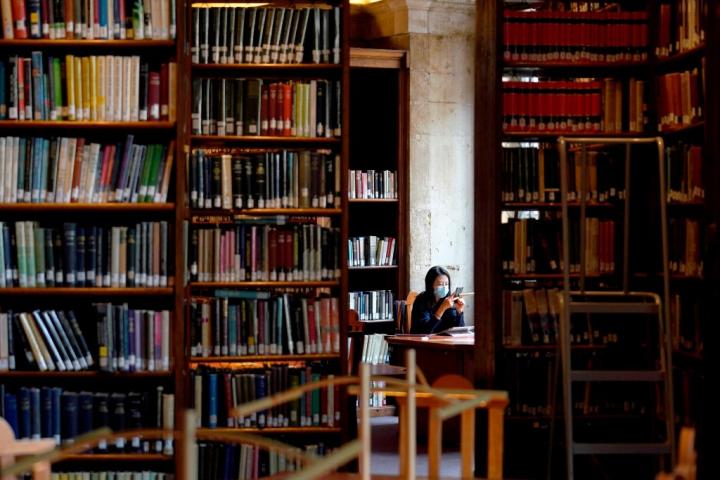Specialists in French medieval literature have discovered two rare manuscript fragments that were hidden in one of Europe’s oldest libraries.

The hand-written parchment pieces of two epic poems were found tucked inside a 16th-century book in Oxford’s Bodleian Library.
A researcher from Queen Mary University of London uncovered the parchment pieces while exploring the reuse and recycling of old books.
Scholars from Edinburgh and Bristol later identified one of the fragments as a long-lost poem called Siège d’Orange – which experts thought existed, but had yet to find anywhere.
The other piece, identified at the University of British Columbia, tells part of the story of Tristan and Iseult – two of the medieval period’s most famous star-crossed lovers.
Exciting addition
Edinburgh Honorary Fellow Professor Philip Bennett described the Siège d’Orange fragment as ‘a most exciting addition to the corpus of medieval French epic poetry’.
The Siège d’Orange is a lost poem from a cycle of chansons de geste – narrative poems – about the legendary French hero Guillaume d’Orange.
At just 47 lines, the new Guillaume fragment offers a tiny glimpse of what experts say would have once been a much longer poem.
Professor Bennett, of the University’s Centre for the History of the Book, said: “Until now, there has been no physical trace of the poem, so this fills an important gap in the poetic biography of an epic figure.”
Earliest versions
Béroul’s twelfth-century poem is among the earliest versions of the famed story of Tristan and Iseult – the ‘Romeo and Juliet of the Middle Ages’.
The only evidence of its existence until now had been an incomplete 13th century manuscript in the Bibliothèque Nationale de France.
The new fragment, which differs significantly from the longer version, demonstrates a wider circulation for the poem than has been previously understood.
It appears to be from a copy of the poem made in England, which was written in the form of French – Anglo-Norman – that was in use in England at the time.
Important discovery
Dr J. R. Mattison, from the University of British Columbia, who helped to identify the manuscript, said: “The moment I saw the names of Tristan and Iseult written in the fragment, I knew it was something important.”
The fragments were found in the binding of a book published in 1528. Unwanted manuscripts and printed books were frequently reused for a variety of purposes because paper and parchment were expensive commodities.
Dr Tamara Atkin, who made the discovery, said: “It’s not uncommon to find manuscripts recycled as waste in the bindings of other books, but they tend to be in Latin and often concern religion.
“It is relatively rare to find manuscripts containing poems written in the language of everyday life used in this way and to find two in a single book is rarer still.”
Collaborative approach
Dr Atkin said she is looking forward to working collaboratively with colleagues in Edinburgh, Bristol and Canada to reveal the fragments’ full significance.”
The team will try to find out more about the fragments’ journey, including when and where they were copied and how they came to be bound in a book printed many centuries later.
They will produce full transcriptions and translations of the fragments, alongside descriptions of their manuscript and bibliographical contexts.








